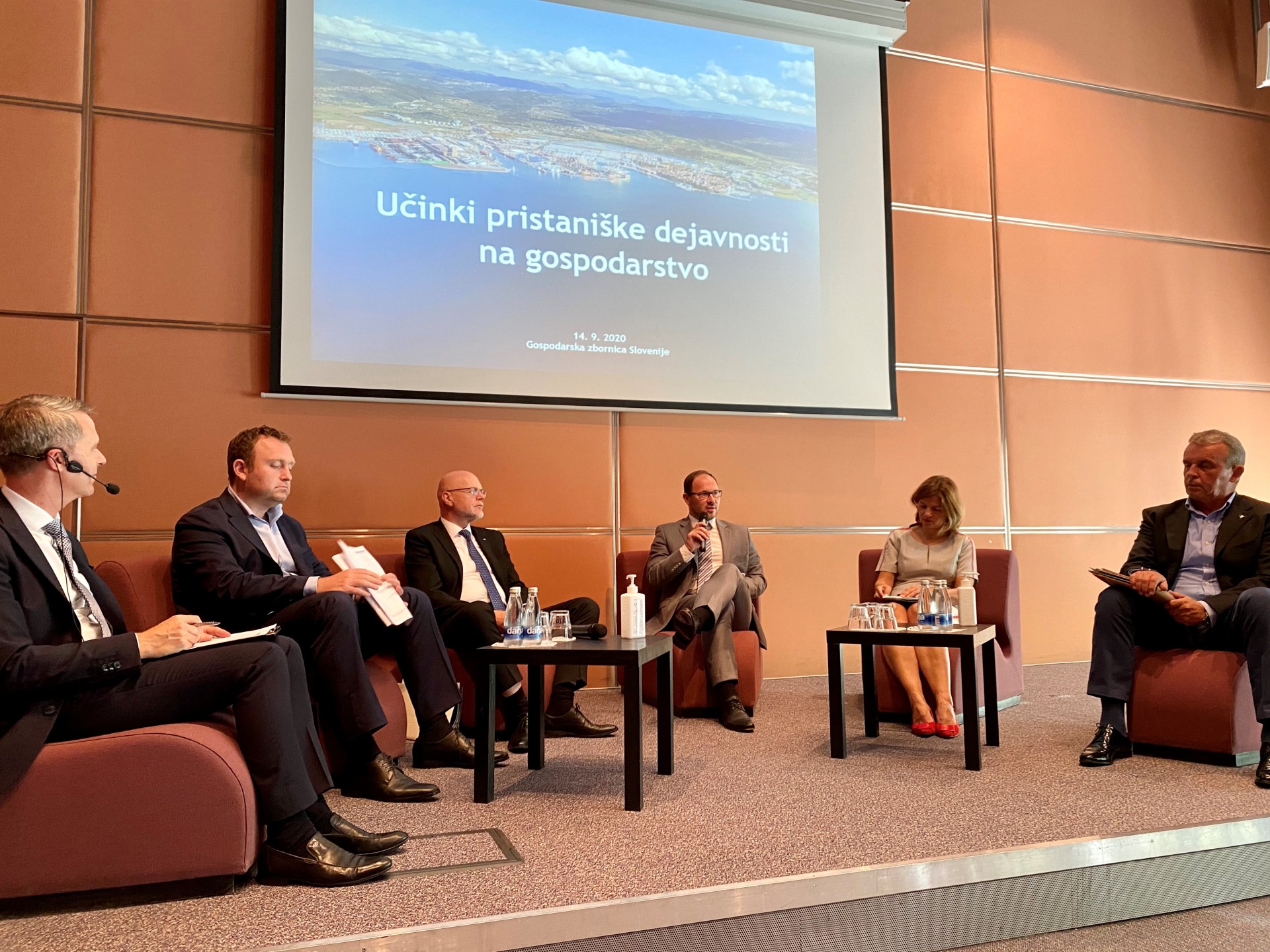Ljubljana, 14 September 2020 – The Chamber of Commerce and Industry of Slovenia presented a study on the effects of port activity on the economy. Currently, more than 7,000 jobs in Slovenia are either directly or indirectly related to port activity, at the center of which is the Port of Koper which ranks among the country’s largest economic entities. The Slovenian port’s value added is even higher than in the case of the Belgian ports and is comparable to the Port of Antwerp, which is the second largest port in Europe after Rotterdam. With the further development of its capacities, the Port of Koper remains the driving force behind the development of logistics and related activities.
The purpose of the study was to assess the economic importance of maritime activity, at the center of which is the Port of Koper, in the years from 2008 to 2018. The study comprised direct, indirect and induced effects. The narrower direct effects included the company Luka Koper d.d. and its transshipment and storage activity as the company’s core activities. Broader direct effects also included the port’s supporting activities such as pilotage, towing, ship supply and maintenance, ship mooring, its truck terminal, control activity, and other general services. Indirect effects, on the other hand, included transport activities (i.e. road and rail transport) and freight forwarding, construction services, banking and insurance services, and public-administration services. The study only covered companies based in Slovenia, as a guarantee that the value added remains within national borders.
The impact of port activity on value added in 2018 increased by 58 percent compared to 2009 and amounted to approximately 400 million euros, whereas total revenues generated by port activity in 2018 amounted to 1.2 billion euros. For each euro of value added generated, port activity contributed almost one additional euro to the value added of other activities. This indicator decreased slightly compared to 2009 (from 2.77 to 1.94) mainly due to a decline in construction services. For the same reason, the staff multiplier also decreased, but nevertheless, each port-activity job contributed to 1.55 jobs in other activities.
The presentation of the study’s findings was followed by a roundtable discussion that was attended by Minister of Infrastructure Jernej Vrtovec, President of the Management Board of Luka Koper Dimitrij Zadel, President of Slovenian Railways Dušan Mes, Director of the Chamber of Commerce of Slovenia Sonja Šmuc, and President of the Association of Maritime Transport Agencies Gracijan Necmeskal, who all discussed the development of the geostrategic and business potential provided by the Port of Koper. The entire roundtable discussion can be viewed here.
Minister Jernej Vrtovec confirmed that the second railway line project will be successfully completed by 2026 and added: “Slovenia’s involvement in international transport flows brings exceptional geostrategic potential to the country. The state will continue to create conditions for the development of appropriate capacities, which, in addition to increasing throughput in the Port of Koper, also include the construction of a second railway line and hinterland warehouses.”
Dimitrij Zadel, President of the Management Board of the Port of Koper, emphasized that the further development of the entire railway network is of key importance for the development of logistics activities in Slovenia. The Port of Koper is developing and getting ready for 2026, when the investment in the second railway line will be completed. With planned investments of around 500 million euros by the end of 2025, the impact of port activity on the economy will further increase.
Dušan Mes, Director General of Slovenian Railways, explained that Slovenia has so far used all available European funds for the modernization of railway infrastructure. At Slovenian Railways, they also have projects in place aimed at drawing funds from the EU Economic Recovery Fund.
Sonja Šmuc, Director of the Chamber of Commerce and Industry of Slovenia, emphasized the need to open the second railway line by the agreed deadline and eliminate the related bottlenecks which are now being faced in logistics activities. Understanding the trends of globalization and de-globalization, which will have a decisive influence on the development of activities in the future, is of crucial importance.
Gracijan Necmeskal, President of the Association of Maritime Transport Agencies, pointed out the critical importance of developing the railway connection between the port and its hinterland, as this is the key challenge faced by all Northern Adriatic ports. The first port which is able to successfully connect its piers with the hinterland railway network will be the winner.




